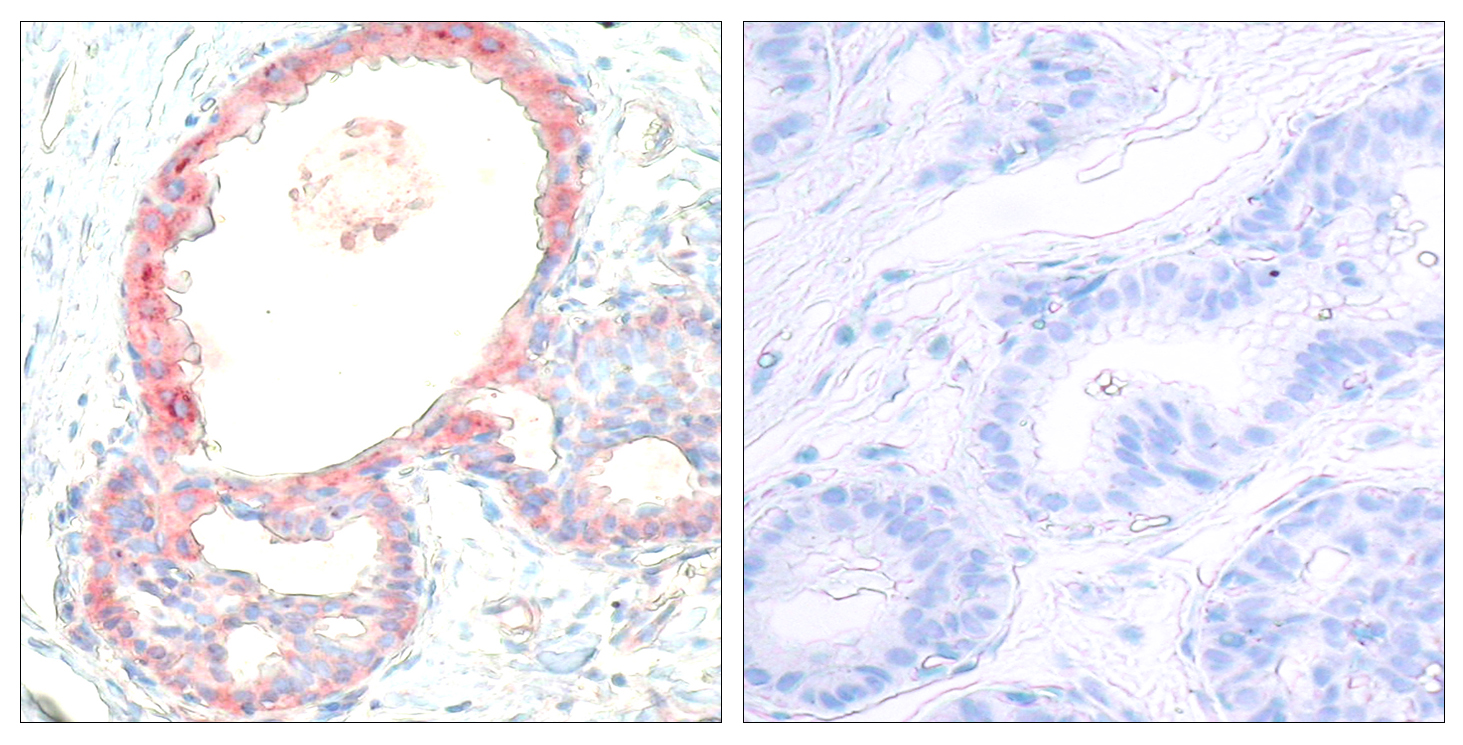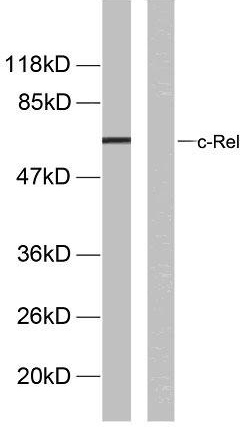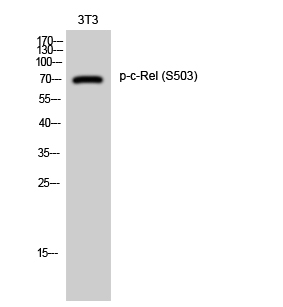产品名称
c-Rel (phospho Ser503) Rabbit Polyclonal Antibody
别名
REL; Proto-oncogene c-Rel
蛋白名称
Proto-oncogene c-Rel
存储缓冲液
Liquid in PBS containing 50% glycerol, 0.5% BSA and 0.02% New type preservative N.
Human Gene Link
http://www.ncbi.nlm.nih.gov/sites/entrez?db=gene&term=5966
Human Swissprot No.
Q04864
Human Swissprot Link
http://www.uniprot.org/uniprotkb/Q04864/entry
Mouse Swissprot No.
P15307
Mouse Swissprot Link
http://www.uniprot.org/uniprot/P15307
免疫原
The antiserum was produced against synthesized peptide derived from human Rel around the phosphorylation site of Ser503. AA range:470-519
特异性
Phospho-c-Rel (S503) Polyclonal Antibody detects endogenous levels of c-Rel protein only when phosphorylated at S503.
稀释度
WB 1:500 - 1:2000. IHC 1:100 - 1:300. ELISA: 1:5000.. IF 1:50-200
宿主
Polyclonal, Rabbit,IgG
背景介绍
This gene encodes a protein that belongs to the Rel homology domain/immunoglobulin-like fold, plexin, transcription factor (RHD/IPT) family. Members of this family regulate genes involved in apoptosis, inflammation, the immune response, and oncogenic processes. This proto-oncogene plays a role in the survival and proliferation of B lymphocytes. Mutation or amplification of this gene is associated with B-cell lymphomas, including Hodgkin's lymphoma. Single nucleotide polymorphisms in this gene are associated with susceptibility to ulcerative colitis and rheumatoid arthritis. Alternative splicing results in multiple transcript variants encoding different isoforms. [provided by RefSeq, Apr 2014],
功能
function:Proto-oncogene that may play a role in differentiation and lymphopoiesis. NF-kappa-B is a pleiotropic transcription factor which is present in almost all cell types and is involved in many biological processed such as inflammation, immunity, differentiation, cell growth, tumorigenesis and apoptosis. NF-kappa-B is a homo- or heterodimeric complex formed by the Rel-like domain-containing proteins RELA/p65, RELB, NFKB1/p105, NFKB1/p50, REL and NFKB2/p52. The dimers bind at kappa-B sites in the DNA of their target genes and the individual dimers have distinct preferences for different kappa-B sites that they can bind with distinguishable affinity and specificity. Different dimer combinations act as transcriptional activators or repressors, respectively. NF-kappa-B is controlled by various mechanisms of post-translational modification and subcellular compartmentalization as well as by interactions with other cofactors or corepressors. NF-kappa-B complexes are held in the cytoplasm in an inactive state complexed with members of the NF-kappa-B inhibitor (I-kappa-B) family. In a conventional activation pathway, I-kappa-B is phosphorylated by I-kappa-B kinases (IKKs) in response to different activators, subsequently degraded thus liberating the active NF-kappa-B complex which translocates to the nucleus. The NF-kappa-B heterodimer RELA/p65-c-Rel is a transcriptional activator.,similarity:Contains 1 RHD (Rel-like) domain.,subunit:Component of the NF-kappa-B p65-c-Rel complex. Component of the NF-kappa-B p50-c-Rel complex. Component of the NF-kappa-B p52-c-Rel complex. Homodimer; component of the NF-kappa-B c-Rel-c-Rel complex (By similarity). Interacts with NKIRAS1. Interacts with NFKBIB (By similarity). Interacts with NFKBIE.,
纯化
The antibody was affinity-purified from rabbit antiserum by affinity-chromatography using epitope-specific immunogen.



